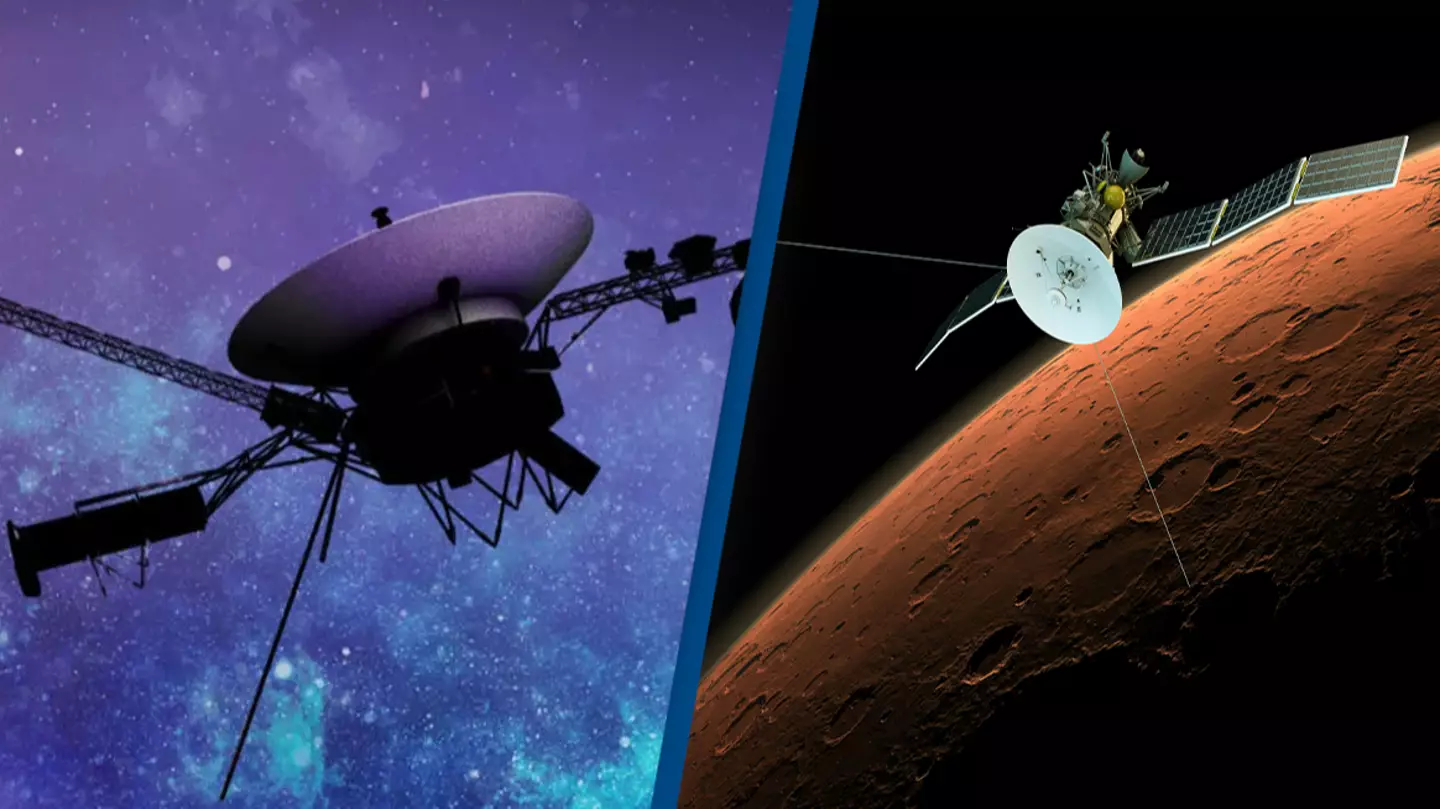NASA has reconnected to a spacecraft that’s currently 24 billion kilometers from Earth using a radio that hasn’t been used since 1981.
If you weren’t aware of how cool the Voyager 1 was, prepare yourself.
What is NASA’s Voyager 1 spacecraft?
This handy craft has been soaring through space along with Voyager 2 for over 47 years now and they are actually the only two spacecraft operating in interstellar space right now.
Voyager 1 recently went silent, causing NASA to go into a bit of a panic.
However, they’ve managed to reconnect to the radio transmitter, which is on the craft and more than 24 billion kilometers (15 billion miles) from Earth.
Why did Voyager 1 fall silent?
Strangely, the spacecraft switched off one of the two transmitters for no apparent reason and now experts are trying to figure out what happened.
Because Voyager 1 is so old, there may be a risk of technical issues, as well as further work for the mission engineering team to get it back to tip top shape.
According to scientists, they believe the transmitter was shut off after it was triggered by its fault protection, which automatically reacts to any issues onboard.
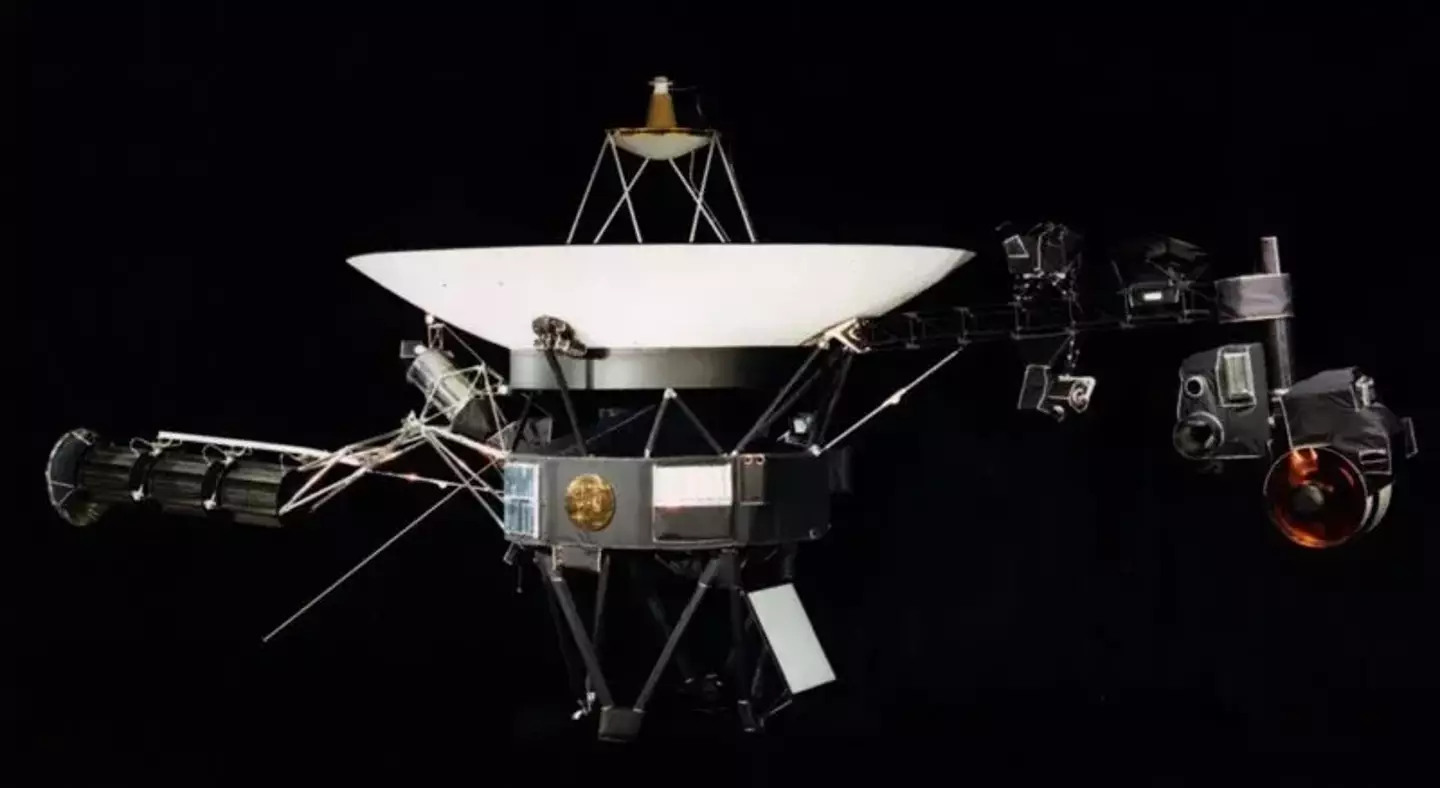
Voyager 1 ran into problems with its transmitter (NASA)
NASA says that if the spacecraft uses too much power, this fault protection system reaction will help it to save energy by letting go of anything that’s not essential to be turned on.
But it could take weeks for the team to find out why it turned on its fault protection system.
Typically, when the team at NASA’s Jet Propulsion Laboratory in Southern California sends instructions to it through the Deep Space Network, Voyager 1 returns engineering data back to the team so they can see how it processed the instructions.
This takes a few days.

A photograph of Jupiter taken by Voyager 1 (Oxford Science Archive/Print Collector/Getty Images)
So, when they sent out their command and finally was able to get a response for the radio silent Voyager 1, it ended up taking 23 hours for the command to travel a whopping 24 billion kilometers from Earth to where the spacecraft was flying, and then another 23 hours for it to return back.
That’s pretty far for it to have flown out.
When the team reached out to the craft on October 16 to command it to activate a heater, it caused it to set of the fault protection system, even though it had enough power to carry out the instruction.
Two days later on October 18, they realised that there was an issue as the spacecraft wasn’t communicating with Earth using its X-band radio transmitter, and they struggled to pick up its signal.
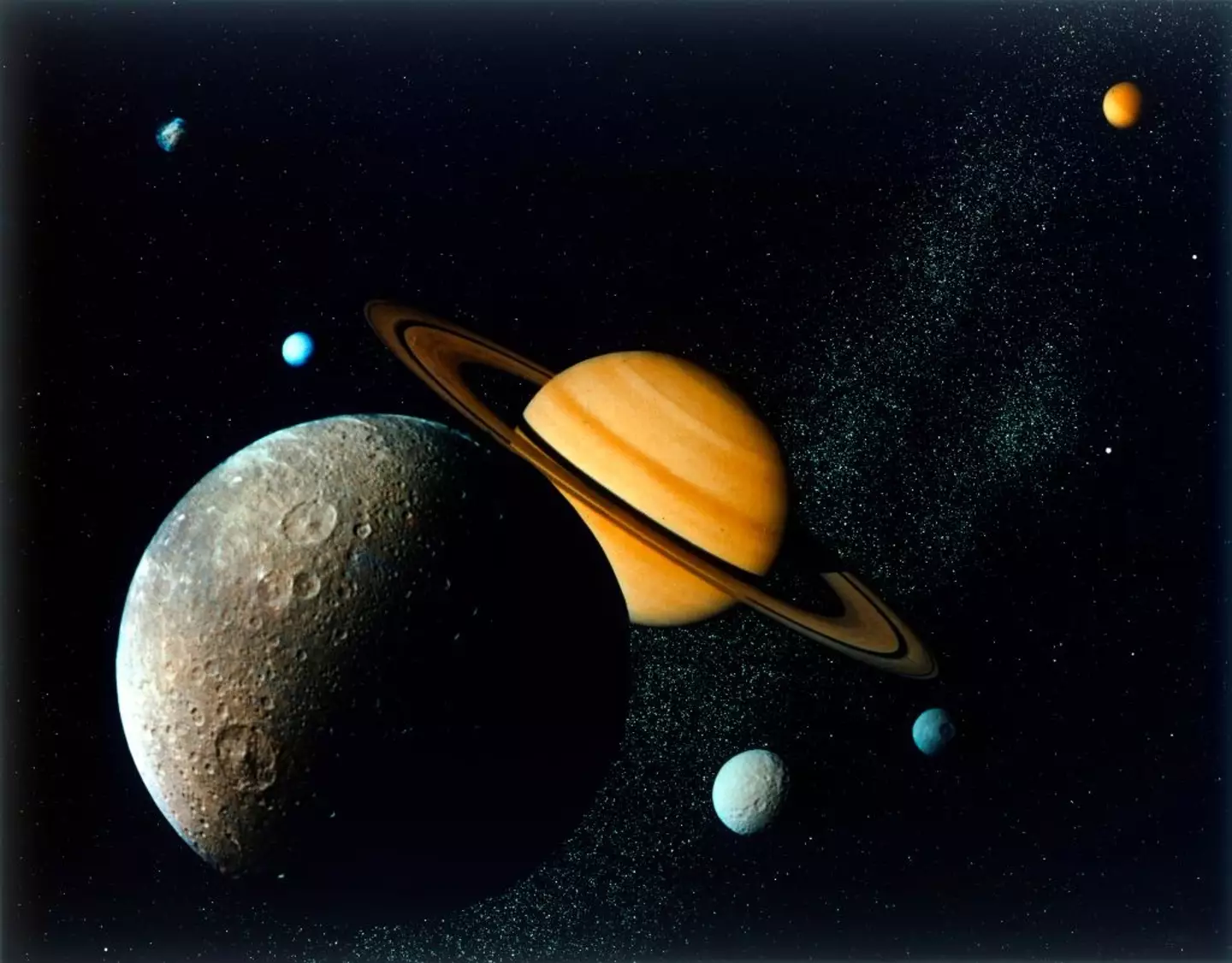
An image of Saturn taken by Voyager 1 (Heritage Space/Heritage Images/Getty Images)
The flight team believe that the fault protection system had reduced the transmitter’s rate of sending back data, altering the X-band signal.
Engineers managed to locate the signal later that same day, and Voyager 1 appeared to be stable, but communication ceased to exist the following day.
The flight team believe Voyager 1’s fault protection system had gone off twice during that time, which switched off the X-band transmitter.
How did NASA reconnect to Voyager 1?
NASA eventually found that Voyager 1 was using a second radio transmitter known as the S-band, which hasn’t been used to communicate with Earth since 1981.
It operates on a different frequency and the signal is significantly weaker.
“It uses a different frequency than the X-band transmitters signal is significantly fainter,” NASA’s Tony Greicius wrote in the Voyager Blog.
“The flight team was not certain the S-band could be detected at Earth due to the spacecraft’s distance, but engineers with the Deep Space Network were able to find it.”
Thankfully, when the Deep Space Network managed to locate the S-band signal, they issued a command on October 22 to verify it was functioning.
Now, they are have confirmed that the S-band transmitter is working well, and are working on restoring the spacecraft to its normal operations.
Conversation1 Comment
Sort by
Featured Image Credit: NASA/JPL-Caltech / Getty Stock Images
Topics: Space, NASA, Technology
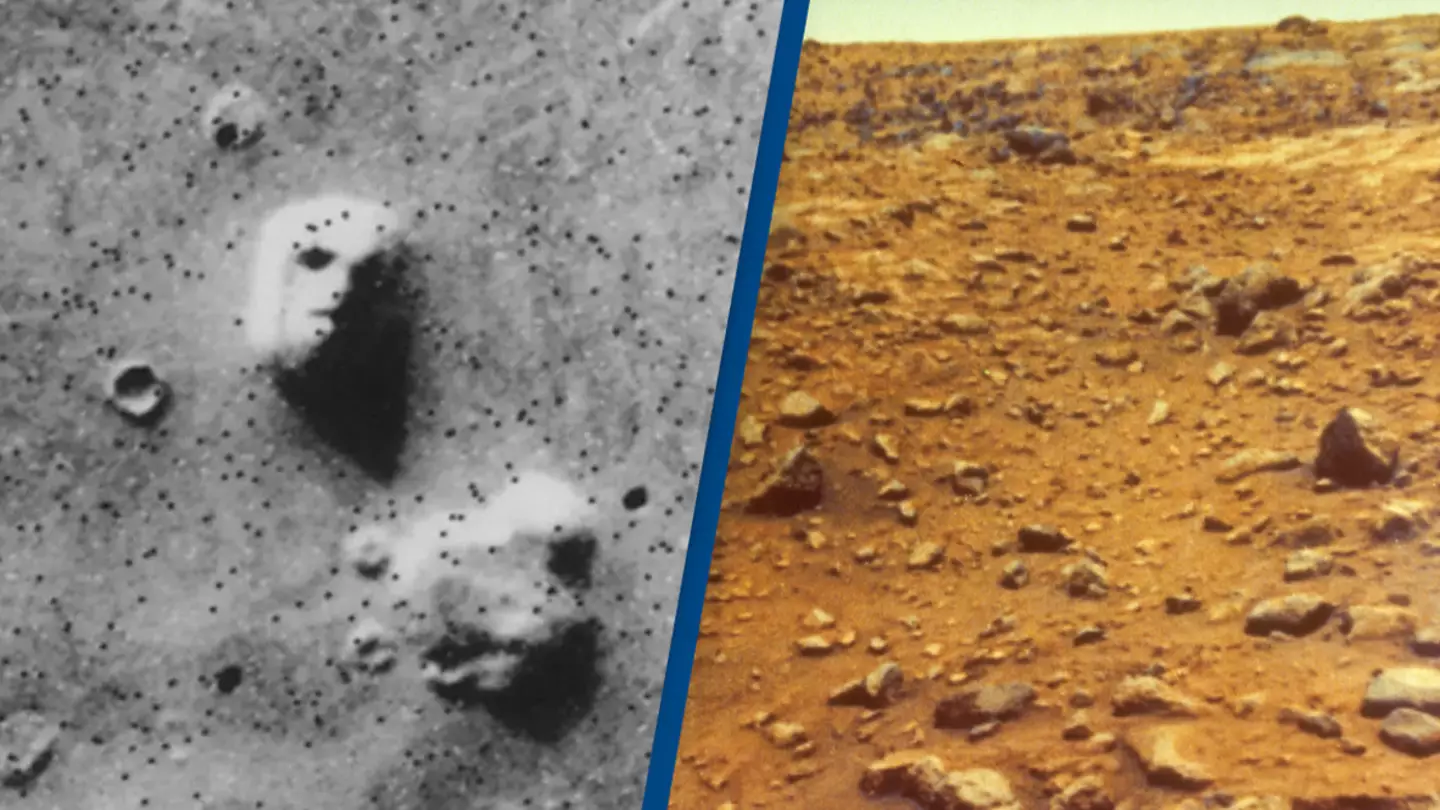
The first spacecraft to land on Mars captured a chilling photo which some believe is proof that life really existed on the Red Planet.
The thought of lifeforms on another planet is, quite frankly, terrifying.
Back in 1976, NASA’s Viking 1 spacecraft was taking photos of Mars to find a possible landing site for sister ship Viking 2.
The Viking 1 lander took the first-ever photograph from the surface of Mars on July 20 of that same year.
Five days later, it captured the ‘Face of Mars’ which NASA describes as a ‘shadowy likeness of a human face’.
Take a look for yourself below.
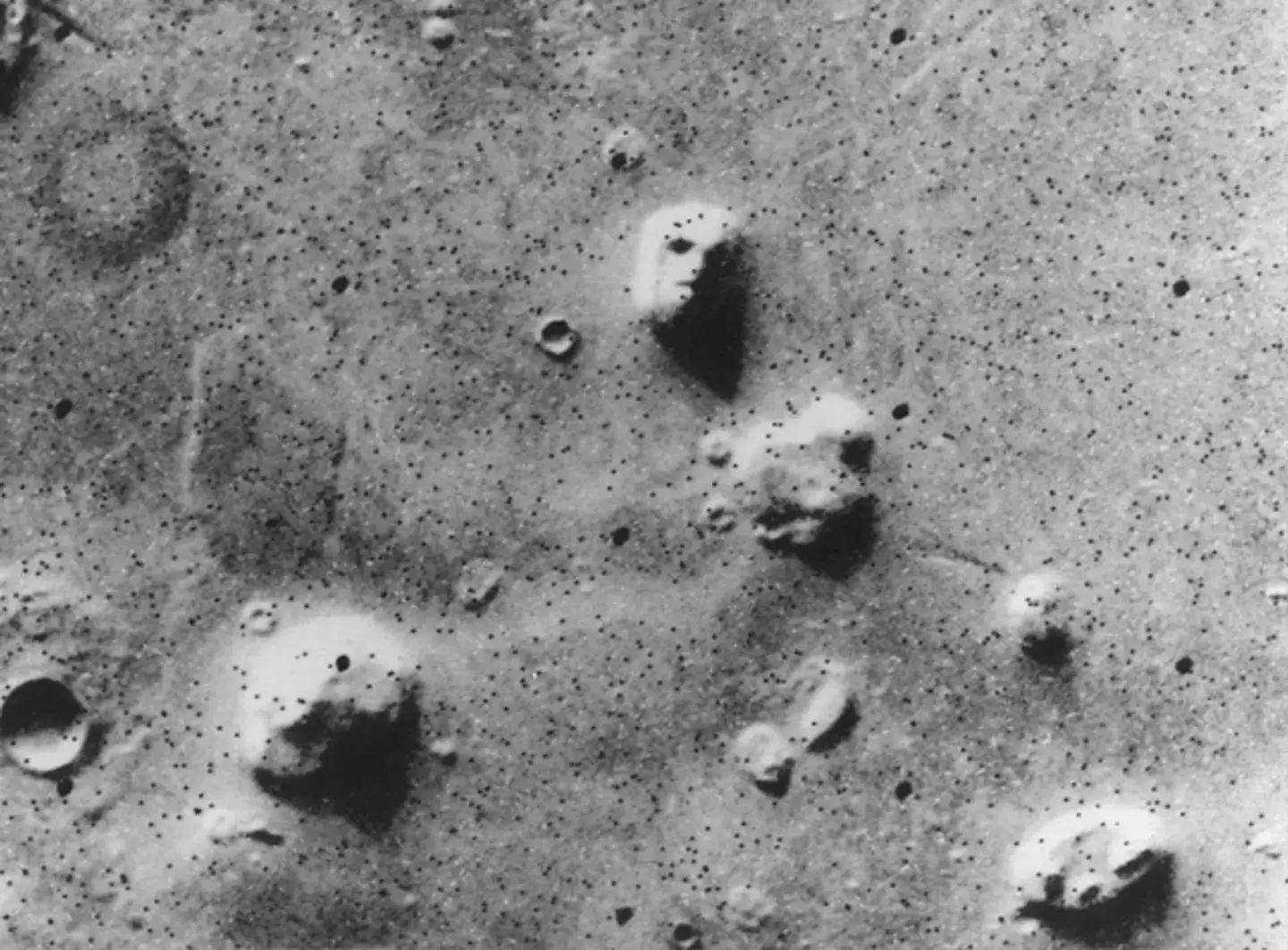
The ‘Face of Mars’ captured by Viking 1 in July 1976 (NASA)
Pretty creepy, isn’t it?
The ‘enormous head’ was almost two miles from end to end and seemed to be staring back at the cameras from a region of the Red Planet called Cydonia, NASA’s website explains.
Shadows in the photo over the huge rock formation gave the illusion of an eye, nose and mouth. Space fans were in awe when the photo was released days later.
NASA had hoped that the picture would be ‘a good way to engage the public and attract attention to Mars’.
The company explained: “Some people think the Face is bona fide evidence of life on Mars – evidence that NASA would rather hide, say conspiracy theorists. Meanwhile, defenders of the NASA budget wish there was an ancient civilization on Mars.”
.jpg)
Viking I captured the first photos of the surface of Mars in 1976 (Bettmann/Getty Images)
Like most things in life, the reality behind the face is somewhat disappointing.
NASA’s website explains: “The speckled appearance of the image is due to missing data, called bit errors, caused by problems in transmission of the photographic data from Mars to Earth. Bit errors comprise part of one of the ‘eyes’ and ‘nostrils’ on the eroded rock that resembles a human face near the center of the image.”
The rocky formation itself is the Martian equivalent of a butte or a mesa – common landforms around the West of America.
Some years later, on April 5, 1998, Mars Global Surveyor flew over Cydonia for the first time and snapped another photo in the same area as the Face.
And on April 8, 2001, the Mars Global Surveyor returned for a second look. Using ‘absolute maximum resolution,’ the camera captured an even sharper view of the butte.
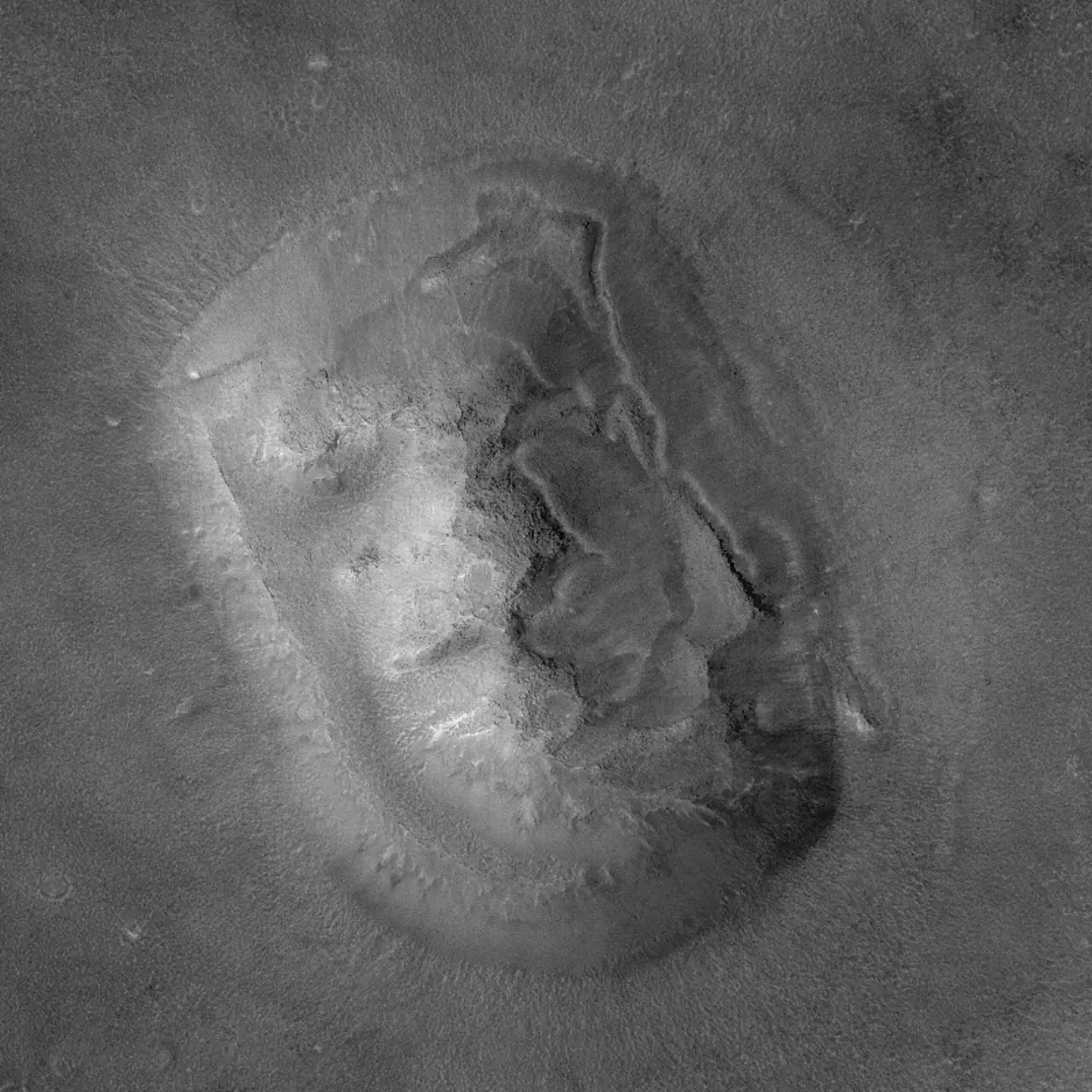
The Cydonia photo taken in 2001 (NASA)
Each pixel in the 2001 image spans 1.56 meters, compared to 43 meters per pixel in the best 1976 Viking photo.
Unfortunately, there was not a face in sight – as you can see in the photo above.
While there might not be a giant rocky face staring at us down from Mars, who’s to say other lifeforms aren’t watching over us right now? We might find out one day!
Conversation1 Comment
Sort by
Featured Image Credit: NASA/CORBIS/Corbis via Getty Images
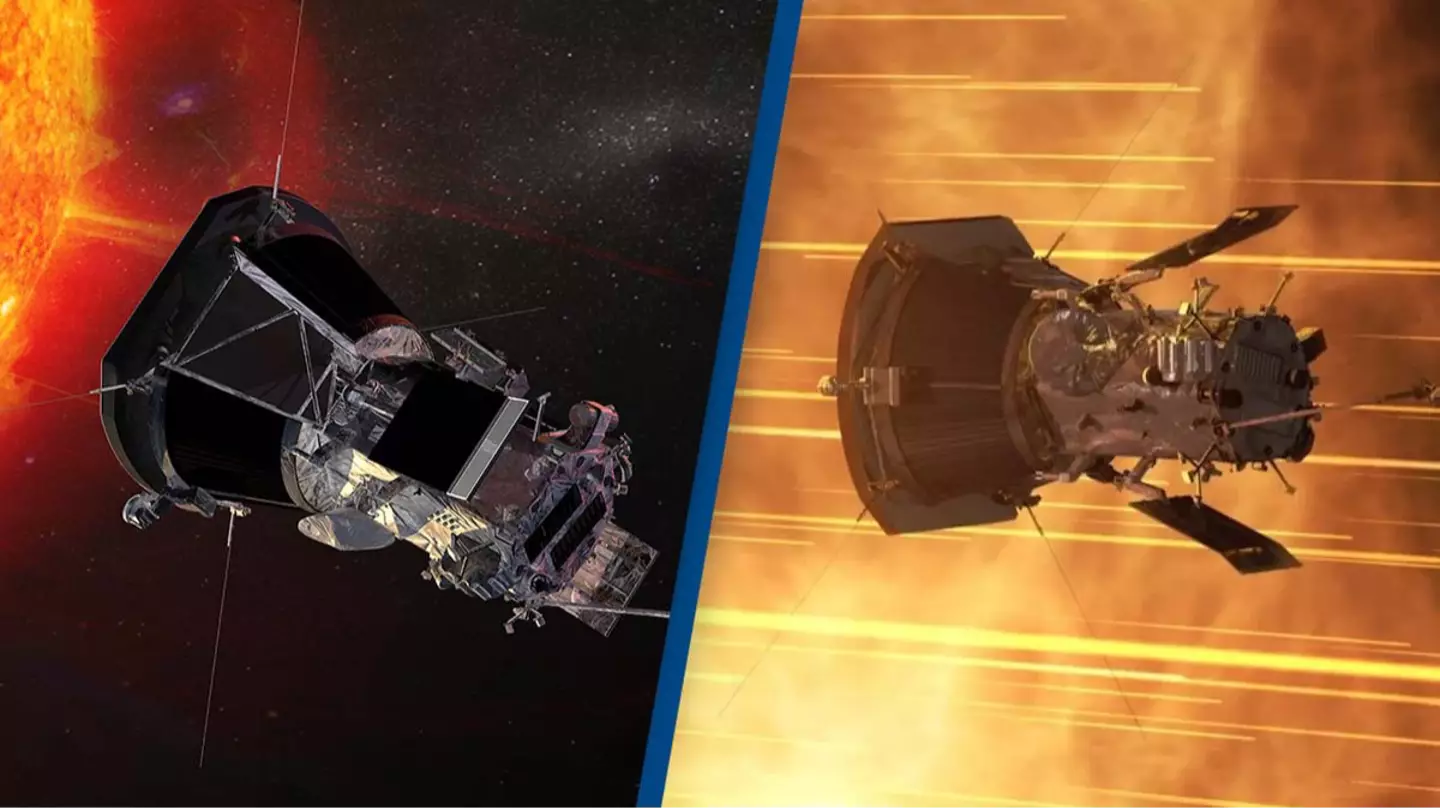
NASA to prepare ‘monumental achievement for humanity equivalent to the moon landing’ with planned spacecraft expedition.
Within the year NASA’s probe will journey 3.8 million miles into space, brushing past the sun’s molten surface with hopes of ‘landing on a star’ at 435,000 mph, making the probe the first of its kind to land so close to the sun’s surface as they obtain the ‘first-ever sampling of a star’s atmosphere.”

The galaxy craft has been sent to sun surface. credit: gettyimages
The ‘Parker Solar Probe’ is the closest a man-made object has ever gotten to the surface of the sun, with scientist Nour Raouafi telling BBC: “This will be a monumental achievement for all humanity. This is equivalent to the Moon landing of 1969.”
We are basically almost landing on a star,” he explained. As the craft will be seven times closer to the sun than any other craft in humanity’s history.
The Parker Probe has been a success so far, as well as being crowd ‘the first spacecraft to touch the sun’ back in 2018, the probe also collected crucial data on the sun’s upper atmosphere solar wind, breaking speed and distance records on the way.
The probe will gather photographs and measurements that scientists hope will help them better understand the phenomenon of solar wind.
“As we speed closer and closer to the solar surface, we will learn more about the properties of the Sun itself,” Raouafi said in a statement last year, “but that data will also significantly improve our knowledge of space weather and our ability to live and work in space.”
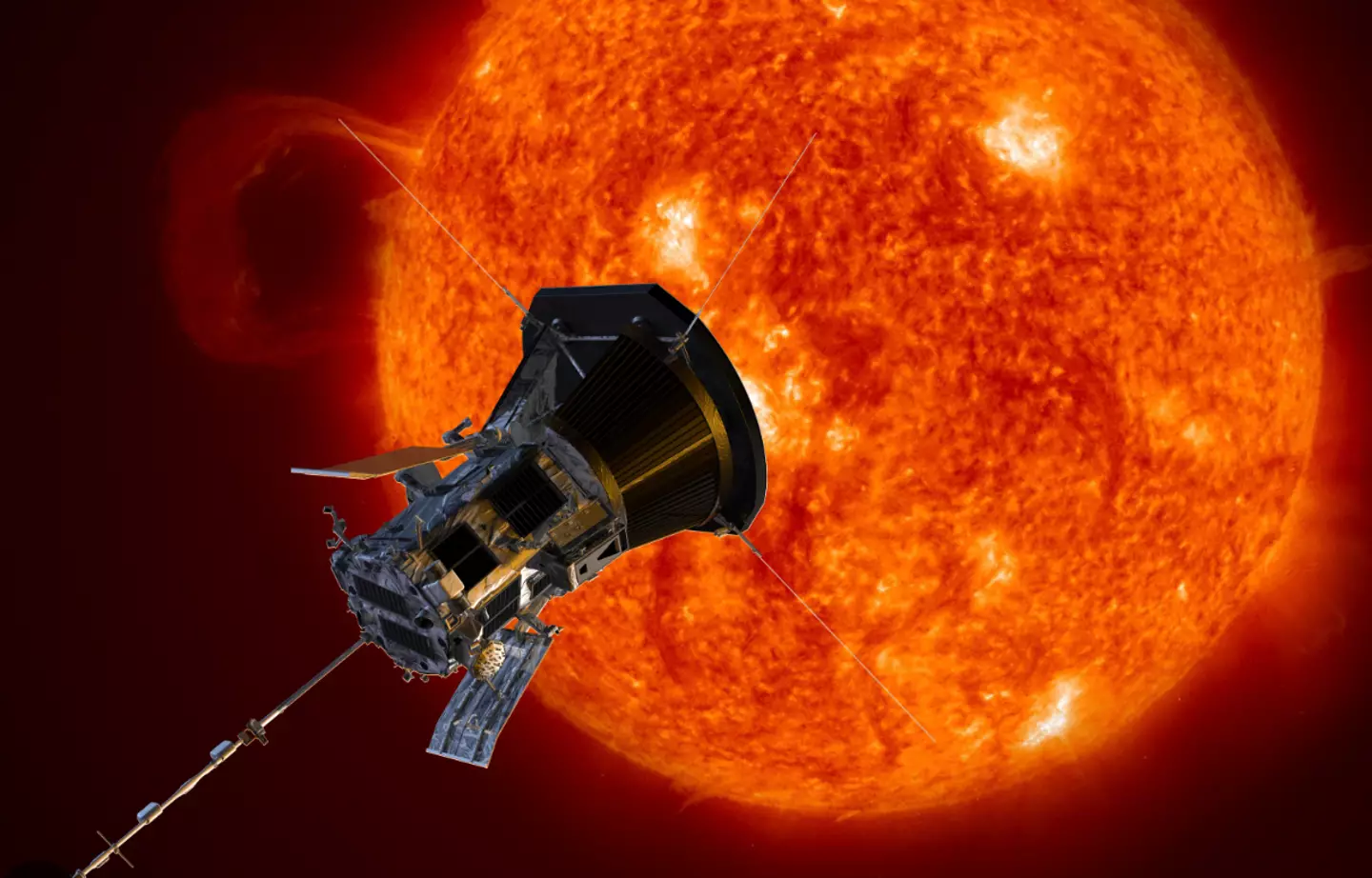
The man-made probe was sent to the sun’s atmosphere. credit: sciencemuseumblog
The galaxy gadget cost $1.5 billion to make and was manufactured by Applied Physics Laboratory back in August 2018. Much of the cost of the probe is said to be on its material make-up as to not melt with the heat of the sun, as Parker Solar has been designed to withstand the extreme conditions and temperature fluctuations for the mission. The key lies in its custom heat shield and an autonomous system that helps protect the mission from the Sun’s intense light emission, but does allow the coronal material to ‘touch’ the spacecraft.
Dr Nicky Fox, NASA’s head of science, told the BBC that they ‘don’t know’ what they’ll find in the mission, “but we’ll be looking for waves in the solar wind associated with the heating.”
“I suspect we’ll sense lots of different types of waves which would point to a mix of processes that people have been arguing over for years,” she added.
Featured Image Credit: Johns Hopkins University Applied Physics Laboratory / NASA
Topics: NASA, Technology, Space
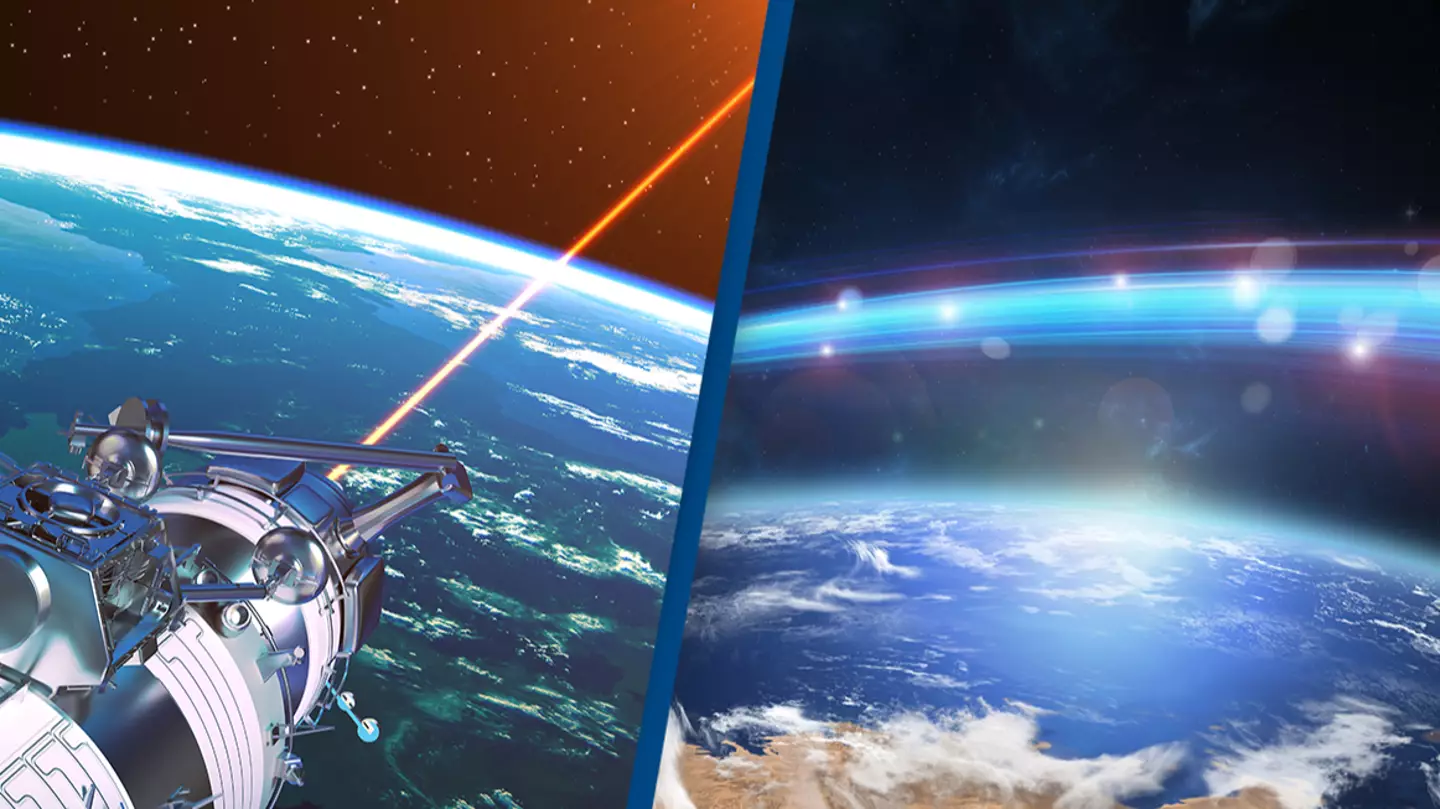
NASA have just made history… with a cat video.
Sounds underwhelming because, well, cat videos are pretty much all over the internet and have been for a long time.
But this short clip was instead sent from 19 million miles away from the Psyche mission’s spacecraft.
The Psyche mission launched in October – with the rocket now making its way to metal rich asteroid, 16 Psyche.
It won’t actually land on it, but will orbit the asteroid instead.
There’s said to be a staggering $10,000,000,000,000,000,000 worth of precious metals on the asteroid, with the spacecraft expected to land in its orbit in August 2029.
READ MORE:
MYSTERY AROUND FIRST TOMATO GROWN IN SPACE SOLVED
THIS IS THE BIZARRE WAY ASTRONAUTS SLEEP IN SPACE
NASA’S HELICOPTER FINDS ‘OTHERWORLDLY’ WRECK ON PLANET
And the Psyche mission is being putting to good use in regards to the communications sphere while making its way to the metal rich asteroid – with the video of Taters the cat being hailed as a huge milestone for NASA.
In the video, ginger tabby Taters can be seen chasing a laser pointer on a sofa. What’s not to like?
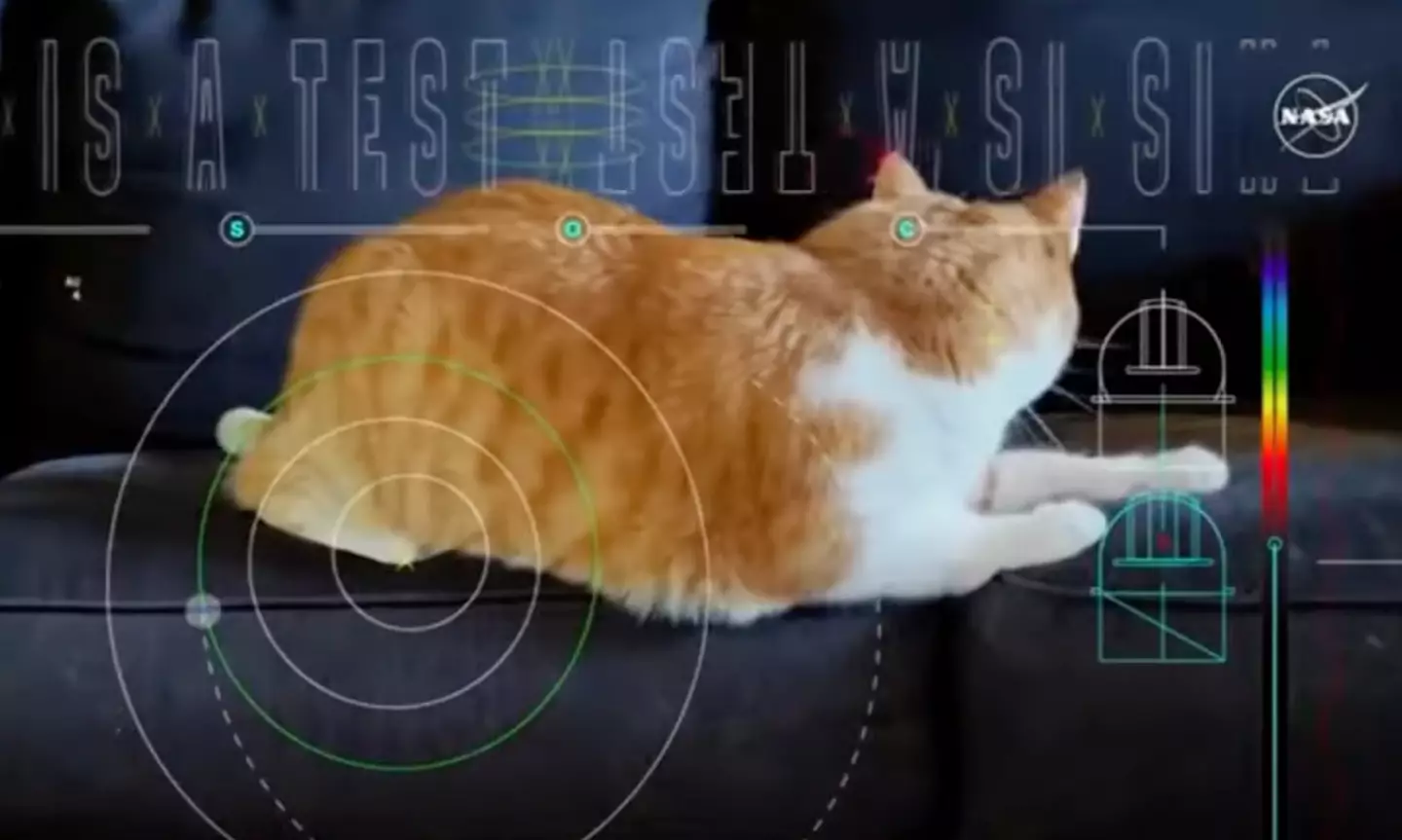
NASA/JPL-Caltech
But fear not, animal lovers – Taters isn’t actually in space.
The video was recorded on Earth and uploaded to the spacecraft before it launched.
Taters is owned by one of NASA’s Jet Propulsion Laboratory (JPL) employees.
The cute clip of the cat was sent down to earth from NASA’s Psyche mission is in a matter of seconds – faster than some broadband providers.
And in 101 seconds to be precise, JPL employees received the video.
It was encoded into near-infrared laser signals and sent by a flight laser transceiver carried aboard Psyche to the Hale Telescope at Mount Palomar.

NASA/JPL-Caltech
NASA Deputy Administrator Pam Melroy said of the successful data transfer: “This accomplishment underscores our commitment to advancing optical communications as a key element to meeting our future data transmission needs.
“Increasing our bandwidth is essential to achieving our future exploration and science goals, and we look forward to the continued advancement of this technology and the transformation of how we communicate during future interplanetary missions.”
The successful experiment comes after the Psyche mission successfully sent a message down to Earth via laser last month.
But the video of the adorable Taters is even more impressive as it’s proven that larger data can be transferred over by the groundbreaking beam.
Bill Klipstein, the tech demo’s project manager at JPL, said that that one of their goals is ‘to demonstrate the ability to transmit broadband video across millions of miles’.
Featured Image Credit: 3D Sculptor/alex_west/Getty Images
Topics: Cats, Technology, NASA, Space, News
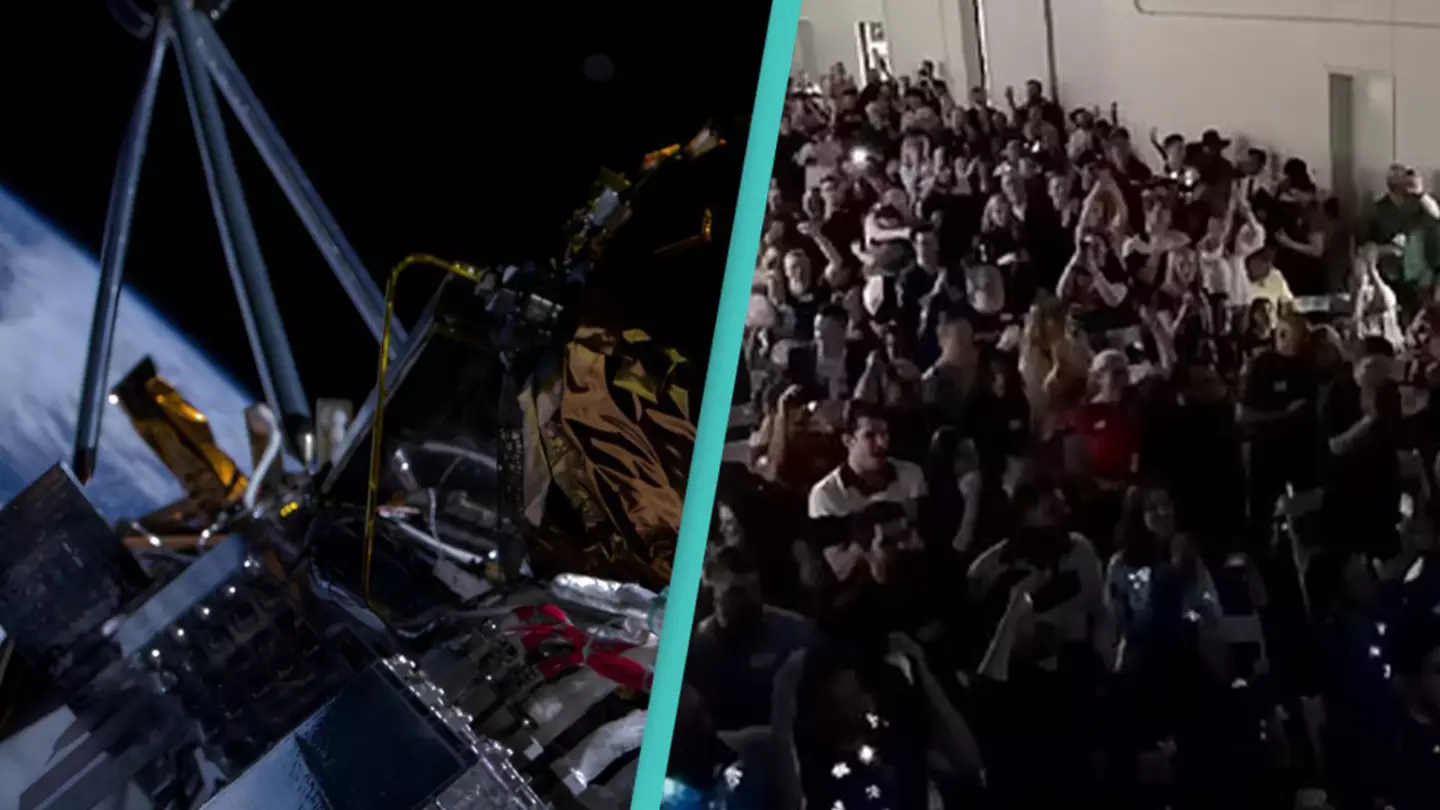
Odysseus, an uncrewed spacecraft, has successfully landed on the moon.
This is the first time a US spacecraft has successfully touched down on the moon since the Apollo 17 landing back in December 1972.
On Thursday (February 22), the six-legged unmanned robot landed at 6:24pm ET at a crater called Malapert A, near the lunar south pole, having slowed down from 6,500 kph (4,000 mph).
Many anxiously tuned in to NASA TV as Odysseus, which was built by Houston-based Intuitive Machines with funding from NASA, softly hit the surface after circling the moon around 57 miles above the surface.
In a video shared by NASA, the employees of the Scorpius Space Launch Company (SSLC) and their families are seen watching the landing from Torrance, California.
The spacecraft used next-generation fuel tanks from SSLC for the mission.
After hearing news of the touchdown, the employees are seen cheering and clapping with excitement.
“Houston, Odysseus has found its new home,” said mission director Dr Tim Crain shortly after confirmation of the signal.

NASA
“I know this was a nail-biter, but we are on the on the surface, and we are transmitting,” Intuitive Machines CEO Steve Altemus said. “Welcome to the moon.”
NASA Administrator Bill Nelson was quick to congratulate those involved in the mission.
“Today, for the first time in more than a half century, the U.S has returned to the moon,” he said.
“Today, for the first time in the history of humanity, a commercial company, an American company, launched and led the voyage up there.
“And today is a day that shows the power and promise of NASA’s commercial partnerships.”
Nelson concluded: “What a triumph! … This feat is a giant leap forward for all of humanity.”
The White House’s official X account wrote: “Go Odysseus! We’re over the moon about the U.S.’ first lunar landing since 1972!
“Congrats to @Int_Machines and @NASA’s CLPS!
“As @POTUS says, ‘With science, hope, and vision, there’s not a damn thing we can’t do as a country’.
“Welcome to the moon.”
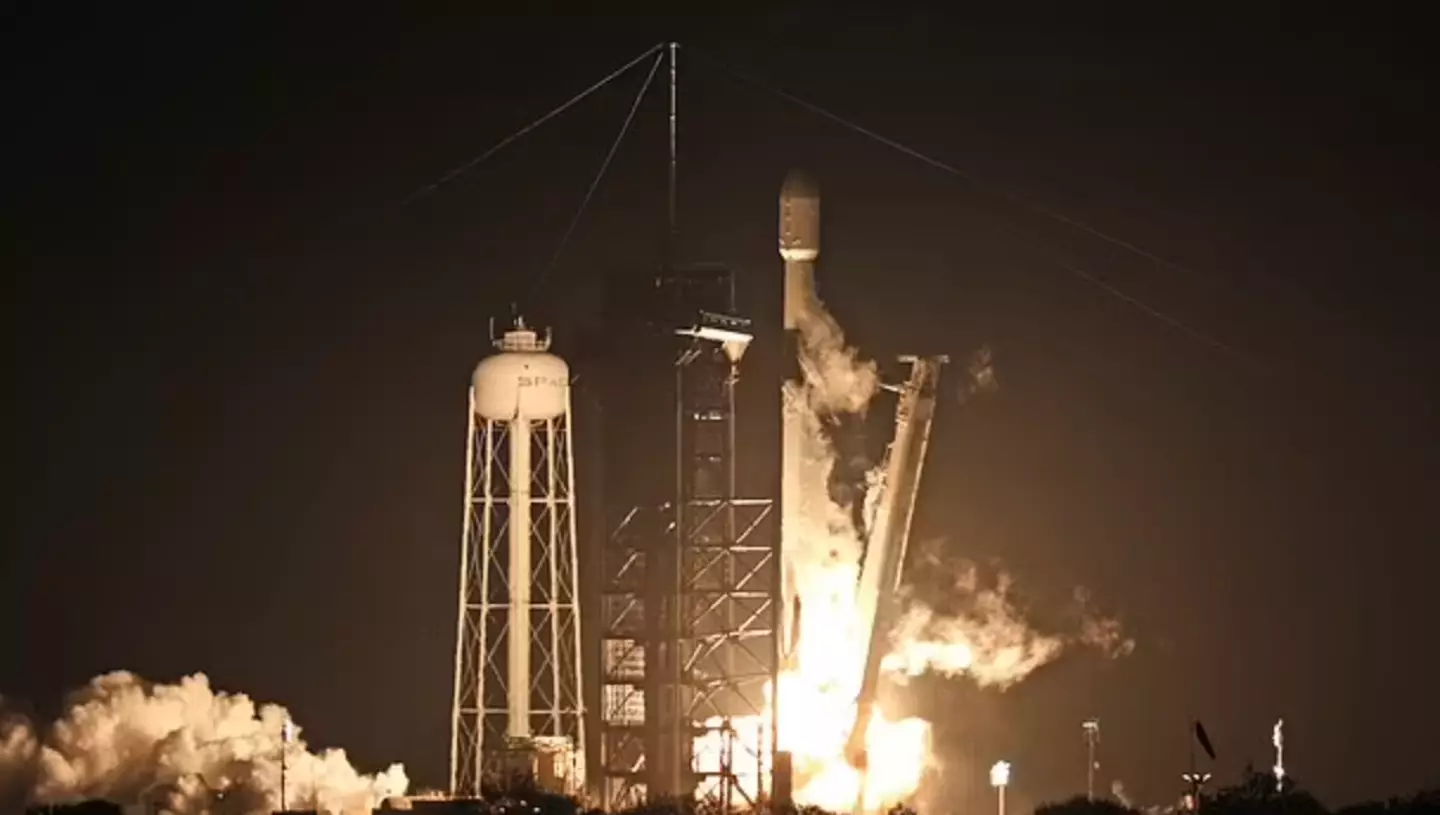
AFP/Getty images
Odysseus will now work to collect data on space weather interactions to the moon’s surface, radio astronomy and explore aspects of the lunar environment.
Odysseus, ‘Odie’ for short, made the journey to space on February 15 from NASA’s Kennedy Space Centre and was launched by SpaceX Falcon 9, a company owned by Elon Musk.
“Godspeed, Odysseus. Now let’s go make history,” said Trent Martin, Vice President of Space Systems for Intuitive Machines.
“There have been a lot of sleepless nights getting ready for this,” Altemus said before take off.
Featured Image Credit: X/billnelson
